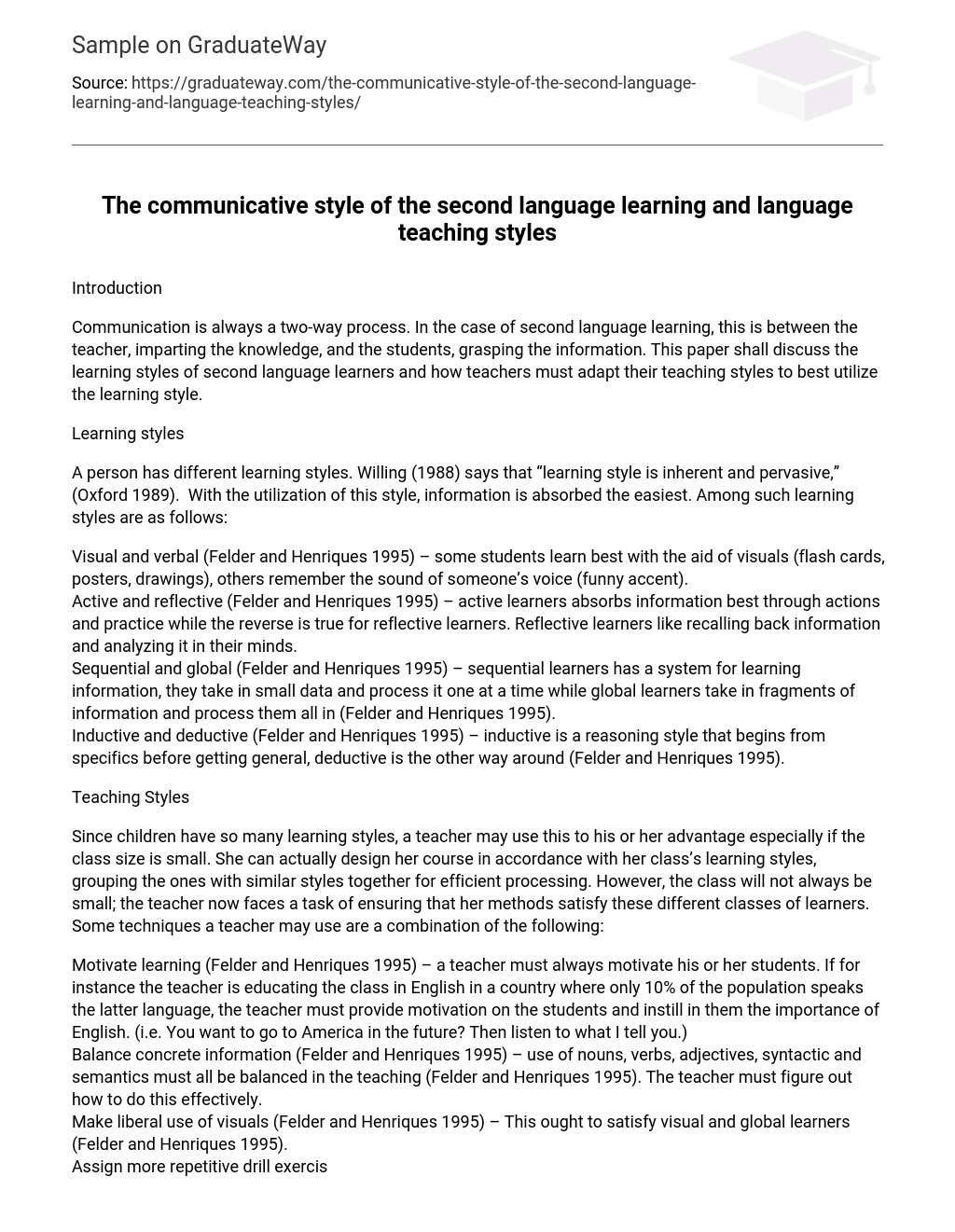Introduction
Communication is always a two-way process. In the case of second language learning, this is between the teacher, imparting the knowledge, and the students, grasping the information. This paper shall discuss the learning styles of second language learners and how teachers must adapt their teaching styles to best utilize the learning style.
Learning styles
A person has different learning styles. Willing (1988) says that “learning style is inherent and pervasive,” (Oxford 1989). With the utilization of this style, information is absorbed the easiest. Among such learning styles are as follows:
Visual and verbal (Felder and Henriques 1995) – some students learn best with the aid of visuals (flash cards, posters, drawings), others remember the sound of someone’s voice (funny accent).
Active and reflective (Felder and Henriques 1995) – active learners absorbs information best through actions and practice while the reverse is true for reflective learners. Reflective learners like recalling back information and analyzing it in their minds.
Sequential and global (Felder and Henriques 1995) – sequential learners has a system for learning information, they take in small data and process it one at a time while global learners take in fragments of information and process them all in (Felder and Henriques 1995).
Inductive and deductive (Felder and Henriques 1995) – inductive is a reasoning style that begins from specifics before getting general, deductive is the other way around (Felder and Henriques 1995).
Teaching Styles
Since children have so many learning styles, a teacher may use this to his or her advantage especially if the class size is small. She can actually design her course in accordance with her class’s learning styles, grouping the ones with similar styles together for efficient processing. However, the class will not always be small; the teacher now faces a task of ensuring that her methods satisfy these different classes of learners. Some techniques a teacher may use are a combination of the following:
Motivate learning (Felder and Henriques 1995) – a teacher must always motivate his or her students. If for instance the teacher is educating the class in English in a country where only 10% of the population speaks the latter language, the teacher must provide motivation on the students and instill in them the importance of English. (i.e. You want to go to America in the future? Then listen to what I tell you.)
Balance concrete information (Felder and Henriques 1995) – use of nouns, verbs, adjectives, syntactic and semantics must all be balanced in the teaching (Felder and Henriques 1995). The teacher must figure out how to do this effectively.
Make liberal use of visuals (Felder and Henriques 1995) – This ought to satisfy visual and global learners (Felder and Henriques 1995).
Assign more repetitive drill exercises (Felder and Henriques 1995) – this should practice the active learners.
References;
Felder R. and Henriques, E. (1995). Learning and Teaching Styles In Foreign and Second Language Education. Retrieved 24 May 2010 from http://www4.ncsu.edu/unity/lockers/users/f/felder/public/Papers/FLAnnals.pdf
Oxford, R. (1989). The Role of Styles and Strategies in Second Language Learning. ERIC Digest. ERIC Clearinghouse on Languages and Linguistics Washington DC. Retrieved 24 May 2010 from http://www.ericdigests.org/pre-9214/styles.htm





